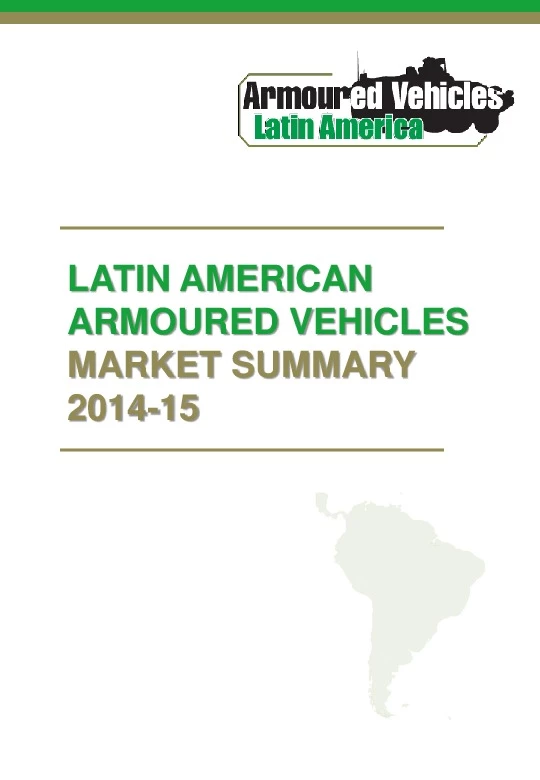Latin American Armoured Vehicles Market Summary 2014-2015
Add bookmark
Latin American countries are continuing armed forces modernisation efforts, either through new funding efforts or through external aid, as issues related to the illicit drug trade, militant terrorism and economic and social inequality fuel persistent violence. While not reaching the heights of defence expenditure seen in Eastern Europe, the Middle East or the Asia-Pacific, the continent has the unenviable reputation of having the majority of the world’s most dangerous cities. In response, military spending had been rising steadily since 2005 until the past year, when Brazil’s slow spending decrease since 2010 impacted the regional rate of expenditure as a whole. Due to the internal discord, much of the focus of this expenditure has rested on the wider concepts of homeland security and deterrence. Armoured vehicles manufacturers have responded to this increasing emphasis on the protection of natural resources and border control.
Figures from SIPRI indicate that defence expenditure across the entire region increased by 2.2 percent between 2012 to 2013, while in the last ten years – a period that saw regional military spending rise 61 percent – Argentina, Ecuador, Honduras and Paraguay all increased their budgets by at least 100 percent. Brazil remains the largest spender in spite of cutbacks, followed by Colombia and Mexico, respectively.
While the defence manufacturing industry of Latin America is growing, there have not been many recent exports to countries outside Latin America since the early 1990s. Within the continent, in the field of armoured vehicles specifically, most countries look to Brazil to first develop some of the mainstays of armoured vehicle technology and then follow suit. There are, however, two competing forces in Latin American defence procurement: the drive to internationalise their provider base and achieve cost effectiveness, and the drive to support local industry.
There are many unmet army requirements such as support vehicles or unarmoured vehicles which may not get funding for several more years – MBTs and IFVs being two of the major shortfalls. Inversely, light armoured vehicles, APCs and MRAPs are seeing a great deal of demand. Approximately 8,500 light armoured vehicles exist in the region while 11,000 light tracked vehicles are forecast to be produced over the next decade at a value of over $30bn, along with 27,000 light wheeled vehicles at an estimated $12bn.
Download the report to read more.
[inlinead]






















